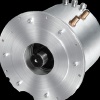Индустриален клъстер "Електромобили" - Учредители:








 |

|

|
| Актуално | За клъстера | Екип | Членове | Документи | Анализи | Услуги | Стани член | Награди | ССЕМ | Контакти |
ИКЕМ - Индустриален клъстер "Електромобили" | Сряда, 31.12.2025 | |
|
Environmental impacts and impact on the electricity market of a large scale introduction of electric cars in Europe
Mobility is a major driver of economic growth and societal development. A large share
Between 1990 and 2006, greenhouse gas (GHG) emissions from overall transport (including
In light of climate change, urgent action is required to reduce global GHG emissions.
The two main drivers of transport emissions are the amount of kilometres travelled and
Therefore, new propulsion systems gain increasing attraction in the context of long-term |
Продукти 
Комплектна система за задвижване на електромобилиСистемата за електрозадвижване обхваща гама с три основни типоразмера на ел. мощност със съответните компоненти - електромотор и контролер. oще ...Виж всички продуктиАнкета с продължение...
|
|
|
 ЕВРОПЕЙСКИ СЪЮЗ Европейски фонд за регионално развитие Инвестираме във вашето бъдеще |
 |
 ОПЕРАТИВНА ПРОГРАМА „Развитие на конкурентоспособността на българската икономика” 2007-2013 www.opcompetitiveness.bg |
|
Интернет страницата е създадена с финансовата подкрепа на ЕФРР, в рамките на проект „Развитие на Индустриален Клъстер Електромобили” по ДБФП К-02-2/28.09.2011 г. |
|||